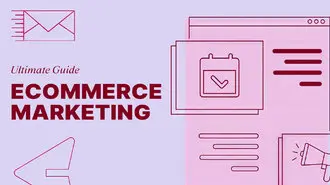Spending big bucks on digital marketing content but not being able to generate revenue through your blogs? It’s about time you learned about increasing blog conversions.
Sure, sticking ads on your blog is an option. But honestly, without at least a thousand visitors per month, it’s unlikely to generate any significant revenue. So, how can you turn those visitors into paying customers? Don’t worry; we’re here to lend a hand.
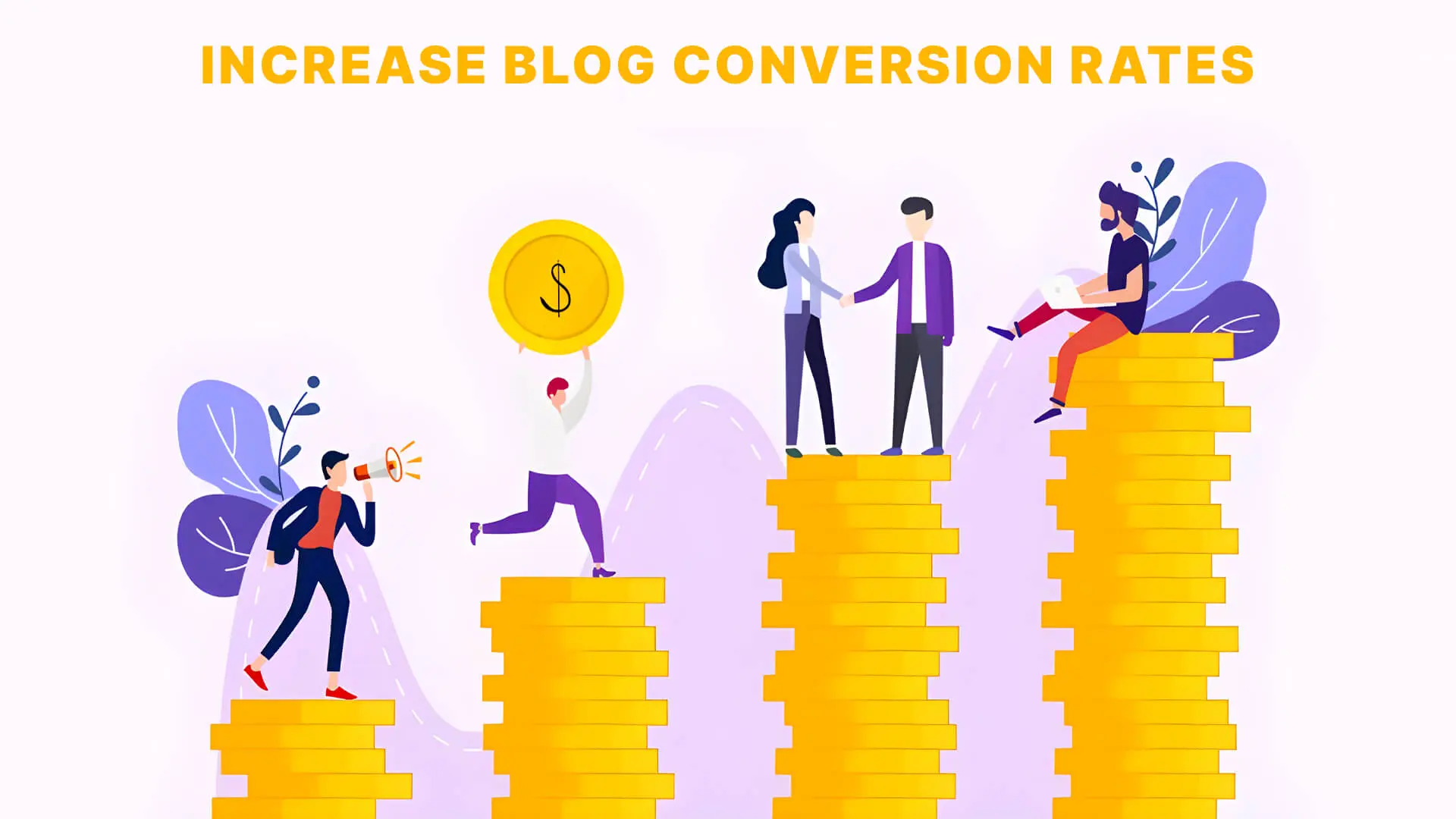
In this guide, we will explain all the possible ways to ensure that you can convert traffic into transactions and clicks into customers. Now, without further ado, let’s get straight to the real stuff.
Want to receive updates? Sign up to our newsletter
Each time a new blog is posted, you’ll receive a notification, it’s really that simple.
Can Blog Posts Really Convert Visitors Into Customers?
The short answer is a big yes. If done correctly, you can convert visitors to interactive blog content, engage with the brand, and eventually purchase. This is why many content marketers believe organic traffic from content development is one of the top online marketing priorities.
That said, converting your blog posts isn’t exactly a walk in the park; it can be quite challenging.
Marketers and business owners often fail to ensure a high conversion rate despite producing top-quality content that brings adequate traffic to their sites every month. Many people who start writing blogs articles quit in less than three months. Successful people usually have patience and implement a few strategies, including a call to action (cta), which we will discuss in the next section.
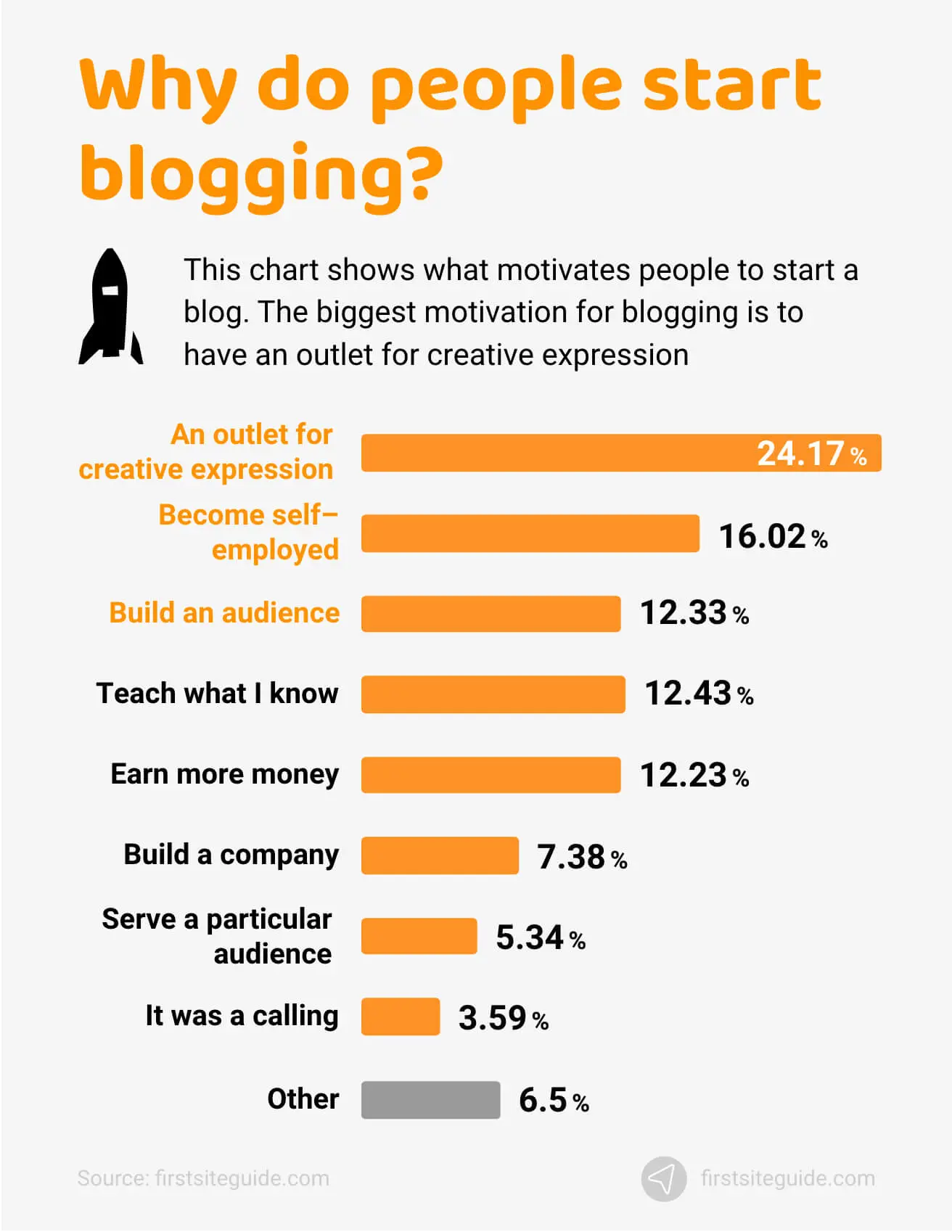
19 Ways To Increase Blog Content Conversions
Here, we have mentioned 19 ways to increase the conversation rates with your blog content.
1. Improve Your Content Quality
Your content quality has a major role in increasing or decreasing conversion rates. If you cannot attract the target audience and keep them engaged, you’re bound to lose them, as no one will read hundreds of words if a blog is boring. So, ensure that you provide enormous amounts of value through your content.
If your main goal is to deliver value, your content will naturally become more focused, which is great. Plus, honing your writing skills can add a bit of flair to your content.
We strongly recommend using subheadings and short paragraphs to help visitors navigate the blog post quickly and easily. This will increase the chances that they’ll read the entire thing from the beginning to the end.
Subheadings are essential for any long piece of content. If your readers just see a wall of text, they might get bored and click away. So, it’s a smart move to use subheadings as signposts to help them navigate your blog.
You will also have to back your writing with data to make the content look credible and authentic to the readers. Therefore, ensure that you complete the necessary research while writing the blogs. Try incorporating case studies and real-life examples wherever possible, as they usually do better than data-free blog posts.
Long story short, keep the content of your blogs as interesting, authentic and engaging as possible to increase the blog conversion rates.
2. Know Your Visitors
Another critical thing to consider to increase your website blog content conversions is the site visitors or readers. Even though it sounds pretty obvious, many site owners get it wrong by posting irrelevant content to their visitors. Your content quality could be incredibly high yet fail to make conversions if your site visitors don’t find it relevant.
So, you need to determine what your visitors want and provide them with that.
Surveying is a good start as it can help you know your site visitors. You could schedule calls with some visitors to know what they want. Other than that, we strongly recommend going through the comment section of your blog posts to find out what the readers want.
You will also notice that specific blog posts tend to garner more comments. Make sure you check the social metrics to know which social media posts get retweeted and shared more often.
Finally, use Google Analytics, a widely used tool that can reveal a ton of stuff about your visitors. It can help you know the location and interests of your visitors. Every online presence, business owner, and blogger should learn to use Google Analytics.
3. Provide Content That Satisfies User Intent
Creating blog content in line with the user intent is one of the best methods to increase conversions. So, what does “user intent” actually mean? It is essentially what a person wants when looking something up on Google. For instance, if you fly from Sydney to Perth, chances are you will search: “flight tickets from Sydney to Perth.”
Here, you intend to buy flight tickets from Sydney to Perth as an Internet user. In response to your search query, Google (or any other search engine) will present you with many airlines with flight rates and times.
There are essentially three main query types:
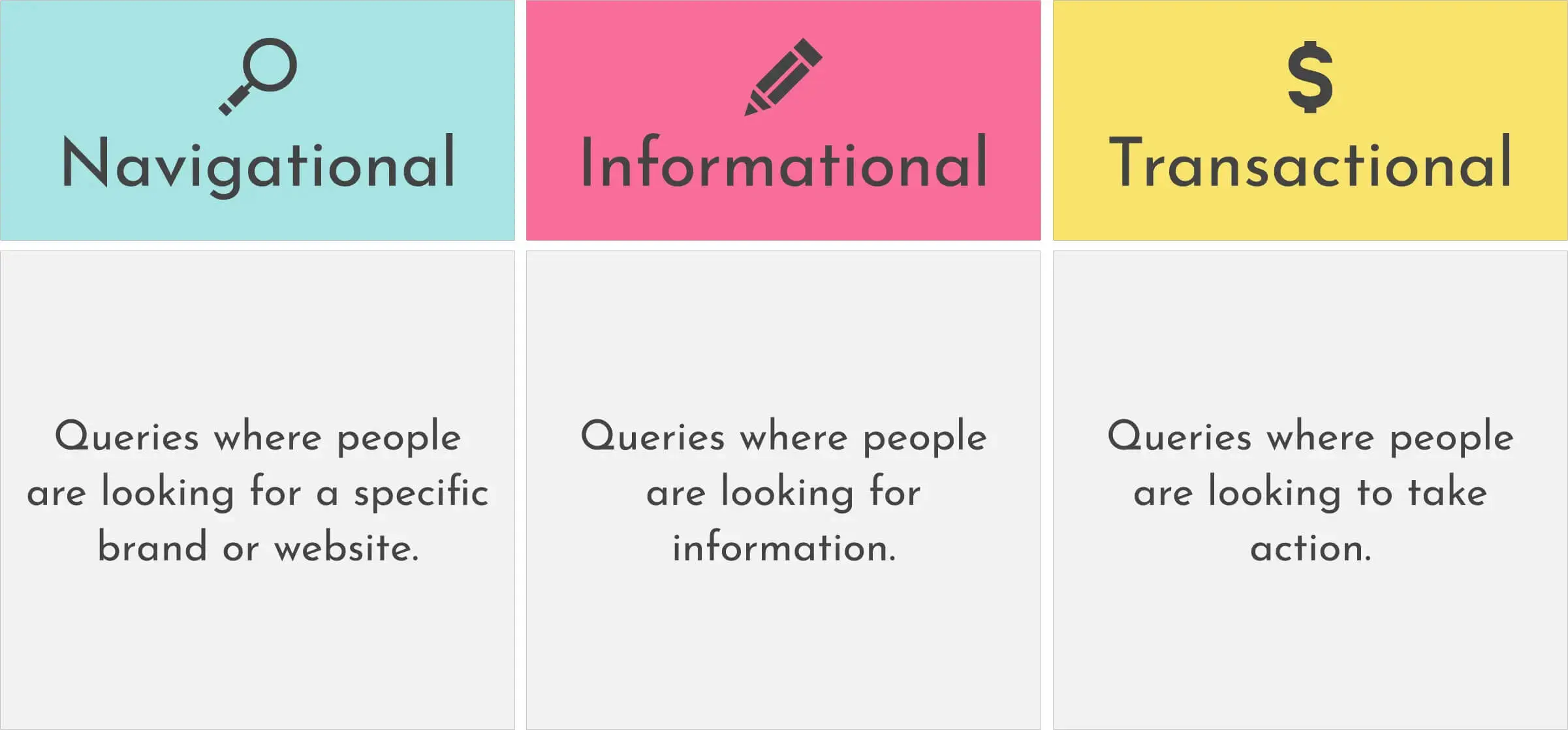
a) Transactional
First, let’s take a quick look at the transaction query type, where the user intends to purchase something. For instance, “best gaming laptops.”
b) Informational
As far as informational query type is concerned, it is where the main intent of the readers is to search for information online to learn about something. For instance, “how to write a blog.”
c) Navigational
When the Internet user is trying to find a specific site, it is called a navigational query. For instance, “Better Homes & Gardens Blog”.
Know that search engines, especially Google, are good at finding out the query type you are using and providing you with the best results. They will offer a hassle-free and quick way to perform a purchase based on your transactional query when you search for flight tickets.
You might wonder how user intent is related to increasing conversions on your website. Well, there is a link; to understand it, you will need to understand the concept of the conversion funnel first. The buying funnel is a model that business owners use as social proof to illustrate how users purchase a product. The basic idea of this model is the website visitor/reader:
- Comes to know about the product
- Starts considering, researching or comparing different products
- Decides to buy the product
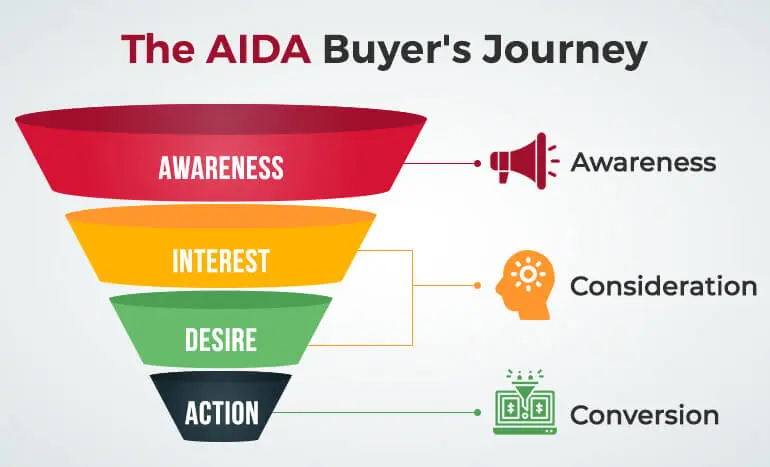
It’s worth noting that the user’s buying funnel includes the research stage (second point). Depending on the information they obtain based on their inquiry and intent, they may purchase. So, form your content to provide the blog visitors with what they are looking for, as such content will most likely lead them to purchase or become a lead magnet.
4. Link Your Content To Relevant Products
Another simple yet effective way to increase blog content conversions is linking your blog posts to your products. But remember that you must link them to relevant products or related posts. For instance, the conversation rate would be poor if your article is about the best gaming laptops and you added a link to a guide about mobile phones.
This is because visitors are there for laptops and not mobile phones. However, the results will be much better if you include a link to your gaming laptop buying guide in the same article.
Always aim to solve your visitors’ problems by incorporating relevant blog links to increase conversion rates.
5. While Using Forms, Don’t Keep More Than Three Fields
Ideally, you would want to keep just one field for email addresses, but it could depend on your product type. If your forms are long and require readers to fill up many fields, they might not go through the hassle, which could lead to poor conversion. So, limit the number of fields in your forms; keep them to three if possible.
6. Create A Group Of Loyal Readers
One of the first things to remember when converting readers into customers is that loyal readers tend to convert first. They are fans of your work and products and love everything you bring; they are usually early adopters. So, make sure that you enhance your readers’ loyalty in the following ways:
- Providing quality and valuable content will increase your conversion for free
- Replying to their comments to make them feel special
- Responding to their emails
These are indeed effective ways to build a loyal reader base. We also highly recommend making videos on your platform, as videos usually have a much higher perceived value than blog posts, and site visitors enjoy watching them.
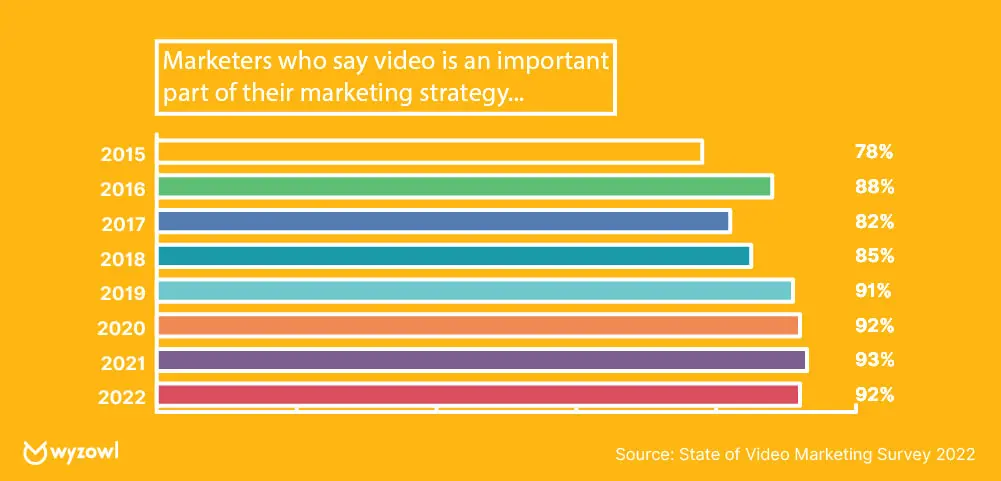
If you are not camera-friendly, you can conduct webinars; they are as effective as videos and are better suited to sell services or products.
7. Collect Emails
Collecting emails is another nifty way to monetise a blog post. Even though it takes a little compared to the other methods mentioned above, it’s worth it as the conversion rates are higher. Here, we have mentioned a few ways of collecting emails on your blog posts:
- Sidebar — can help convert about 2% of your visitors into email subscribers
- Popup — Use tools such as pop ups or PopUp Domination to share your content and get the email address of 3% of your readers
- Blog posts — Adding an email box at the end of your blog can help convert 2% of your visitors into email subscribers
Note that the percentages could vary depending on the number of these methods you utilise.
You want to use a mail drip system when you collect emails. An email drip system typically features seven emails sent to the readers automatically within a span of time. You can create a drip using SendGrid, Aweber, and MailChimp services.
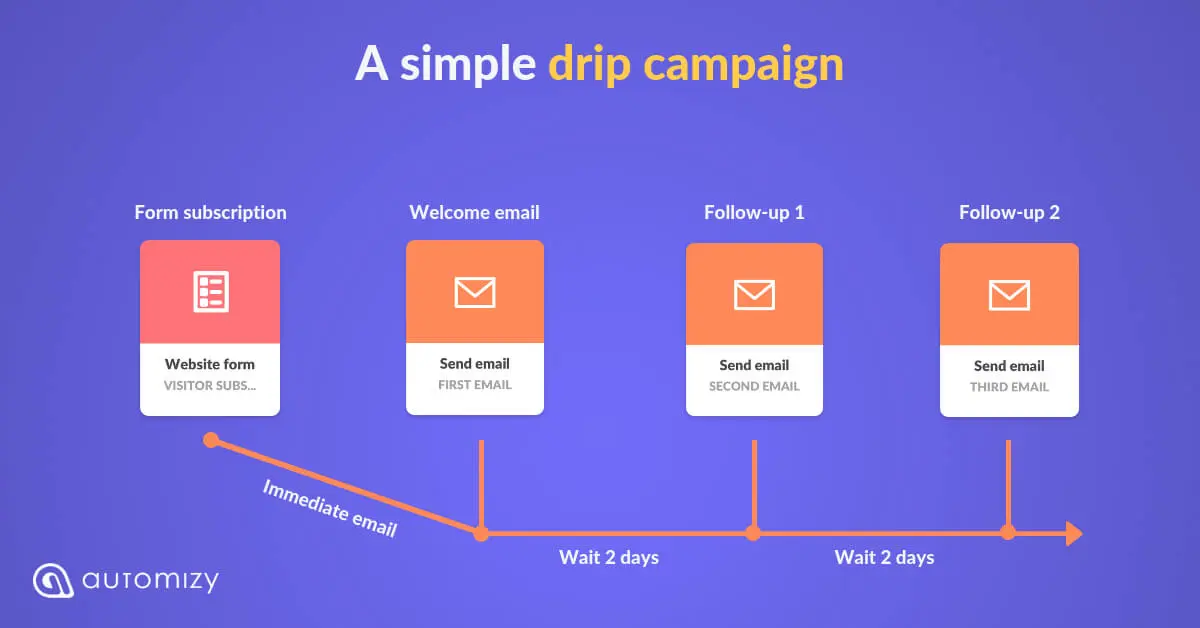
Through emails, you will have to inform and educate the customer base about your products to sell the products to them. With an efficient email drip system, you should be able to convert at least 5% of your readers into customers.
In other words, if you manage to get hold of 100 emails from the readers, you will most likely want to share and convert 5 of them into customers. If you are not an expert in writing drips, we highly suggest hiring a consultant who will do the job on your behalf.
Remember to educate and inform your readers first, build trust in the second step, and then sell the product. The rule is to use seven emails because it is hard to achieve all of those using fewer emails.
8. Shell Out Some Bucks For Remarketing
Believe it or not, it is way easier to bring traffic to blog posts than to the main website, thanks to content marketing. Once you’ve formed a decently-sized readers base, remarket your products or services to them. Pixel your readers using services like Retargeter and Perfect Audience so that they visit sites such as TMZ they see a banner ad for your business.
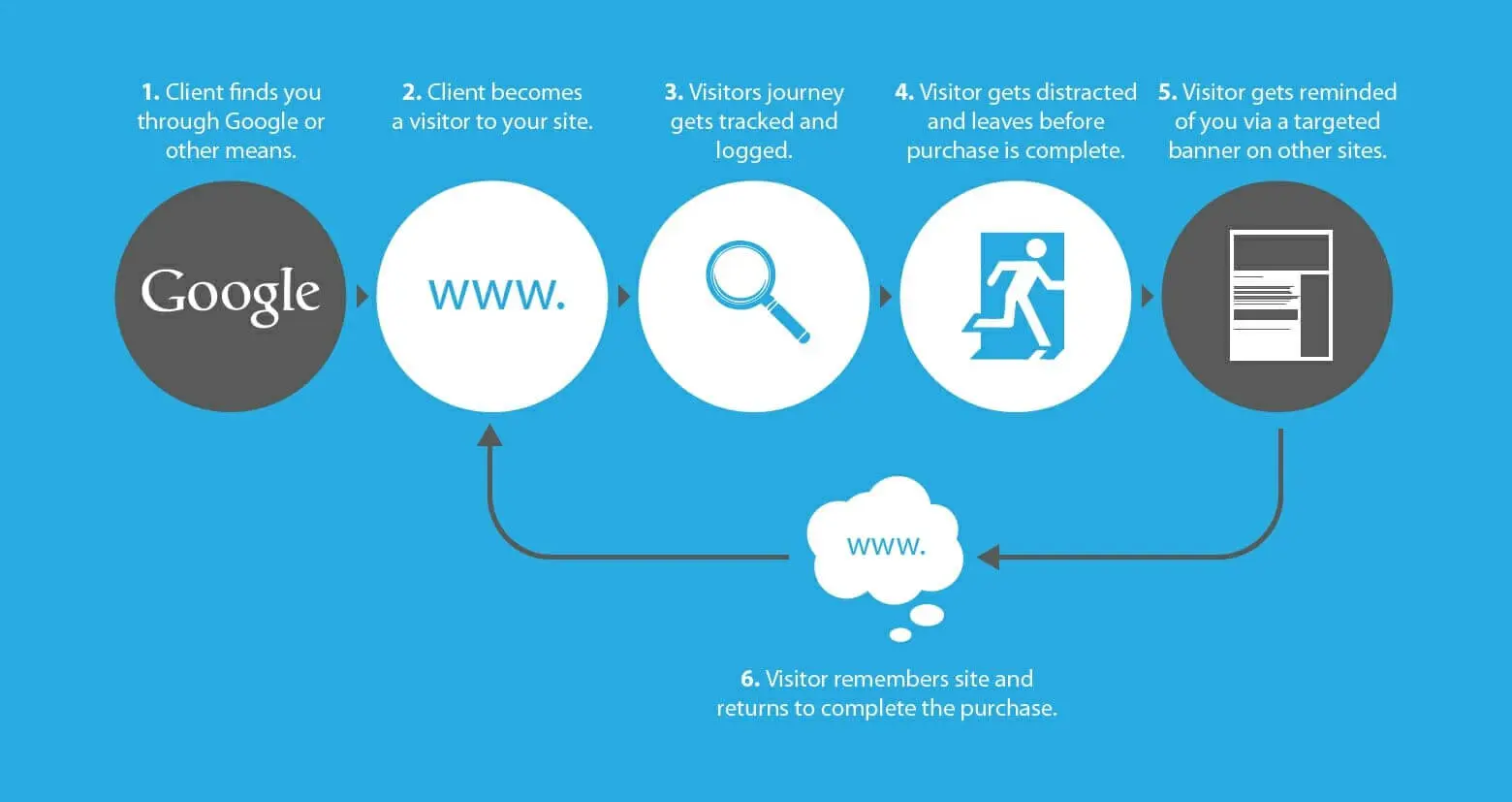
In our experience, you get a click-through rate of about 0.2% upon remarketing. Out of that, 3.25% are likely to be converted into customers.
9. Conduct Weekly Webinars
You must consider conducting weekly webinars to sell services or products more effectively on your site. However, note that the webinars must not only be about your service or product but should also be based on things that could add value to your potential customers. When you provide potential customers with helpful information, they start trusting your brand, which drives signups.
But the thing about conducting webinars is that you must ask people who plan to watch them sign up for your service or product, which is undoubtedly challenging. So, we have explained two ways you can do it.
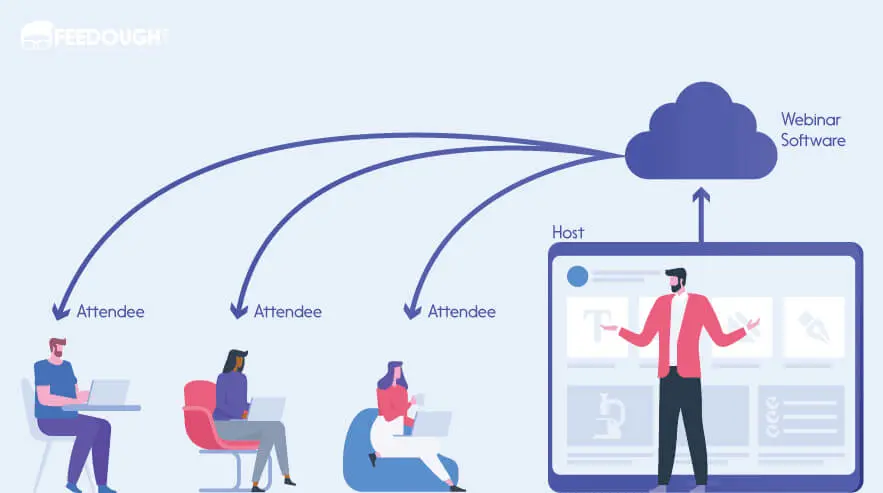
a) Provide a free trial
Perhaps the best way to make visitors sign up for your service or product on your website is by offering them free trials.
b) Ask Them Politely
Another way of making visitors subscribe to your service or product is by asking them directly during the webinar. Even if you manage to get 10% of them on board, consider it a win.
10. Organise Contests
There is no denying that people can’t resist the possibility of getting something free. You can use this by organising free contests. You might wonder how you can generate profit by offering free products or services. Let us tell you that the contests could help grow your audience base and make them interested in the services or products.
Also, we would advise using websites like Rafflecopter to provide extra entries to those who share and link your pages.
11. Fix Problems
Another efficient way to make your blog readers take action is by addressing pain points. Believe it or not, fixing your visitors’ problems is a great way to gain their trust and ensure your business is the go-to choice when searching for solutions.
If your blog offers valuable insights, your readers will likely stick around longer, comment more, and interact with your content. The best part? They’ll probably come back when they need help. So, rather than just promoting your product, emphasise how it benefits your customers.
You don’t necessarily have to write long-form content to address your customers’ pain points; shorter articles can do the job, too. Regardless of your approach, give people a long-term remedy instead of a temporary fix.
12. Don’t Shy Away From Boasting Your Product
No one would be interested in your product or service until they learn about its benefits. Instead of playing coy, show off the features of your product or service on your website to your blog readers. However, it’s worth noting that you shouldn’t praise your product or service as if it is the best thing on Earth!
Instead, provide the readers with detailed and specific reasons for the greatness of your product or service. Don’t forget to mention how it is better than its competitors and how it can benefit the readers. Long story short, give them a reason to buy your product.
You will soon see a conversion rate hike if you can do this correctly.
13. Affiliate Marketing
Any person who knows a thing or two about running a blog would agree that affiliate marketing is one of the best ways to get more visitors to your website. However, ensure that you let the visitors know you are using affiliate links; otherwise, some might feel deceived.
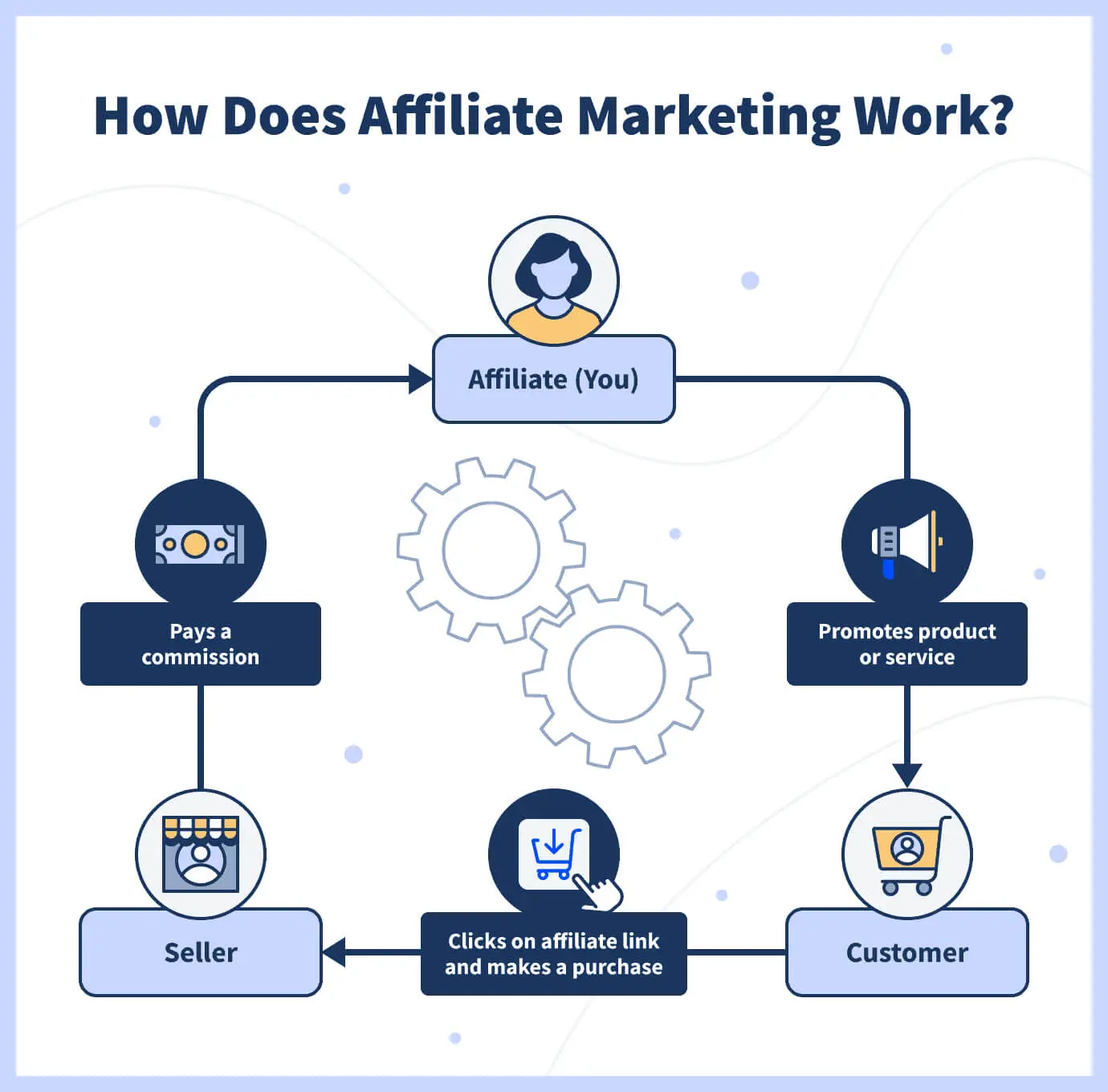
If the visitors genuinely love your content, be assured that there is a high chance that they will buy something to help you out financially.
Also, it’s always a good idea to recommend products you are familiar with, ideally those you have used at a certain point in life. If you are not confident about a product and don’t feel it will positively help your readers, don’t promote it.
Lastly, don’t directly tell your readers to purchase a product and ensure your content doesn’t sound promotional. Instead, be your readers’ buddies and recommend products to enhance their lives.
14. Write About Your Customers
Ensure you share the customers’ experience with the service or product, as it can help take your blog content conversions to the next level. Your visitors will see how your service or product benefits people in real life, become interested in it and consider buying it.
15. Offer Freebies
Let’s face it: any service or product can sound excellent when backed with a beautifully written description. However, if you are confident that your product has something special to bring, we strongly recommend offering a free preview to the readers. Let them know how beneficial the product is.
For instance, if there is a subscription service, make sure you give the visitors a free trial so that they can know what your product is all about. If your product is an e-book, make the first chapter free or the first four chapters free, which would be even better.
16. Customise The CTAs And Landing Pages
To increase blog conversions, produce relevant CTAs (calls to action) for each blog post. We also strongly recommend incorporating a custom landing page. Since each visitor has different goals and interests, having a different landing page can help narrow down the people interested in the service or product.
Once they finish signing up using the landing page, you can introduce yourself and develop a relationship with them.
17. Analyse, Measure And Repeat
Irrespective of your path, remember that blog content conversion takes time. So, you have to review the conversions and traffic now and then and keep evaluating the techniques that worked and those that did not. Using tools like HotJar, CrazyEgg, and Google Analytics, you can assess the results of your efforts and determine which technique of increasing blog conversion is working the best.
Lastly, be sure to perform A/B testing, as it is beneficial to figure out which CTAs, headlines, or language are suitable for your readers.
18. Be Persuasive And Honest
There is no denying that site visitors like it when you are helping them. So, you don’t need to hide or lie about the efforts that you are putting in to convert the visitors from mere readers to customers. If you genuinely provide them with valuable knowledge and help them fix their problem, they will support you in increasing conversions.
Be honest about what you want your visitors to do; they will most likely oblige. Once your conversion rates spike, share your customer journey with them and incentivise them to help. You don’t have to spend a lot of money for that; small rewards such as free merchandise, special mentions and welcome emails would more than suffice.
19. Engaging UI
It’s a no-brainer that visually pleasing blogs make for better engagement and conversion. Here, we have provided a few tips and tricks to make your blogs look more satisfying in the eyes of visitors.
a) Mobile Optimisation
Since most people use mobile phones for content consumption today, you want to ensure that your blogs are optimised for viewing on mobile phones.
b) Scannable Content
Your blogs should be scannable and readable to increase the chances of blog conversions
c) Include Text Breaks
Moving on, you would want to incorporate text breaks like charts, tables, bullet points, and images so that users can read your blogs longer without feeling fatigued.
d) Bigger Font Size
Size matters when it comes to content marketing. The bigger the font size, the better the readability and the more the chances of conversion. In our opinion, 18px and anything above is ideal.
e) Uniformity
Ensure that your font style and spacing are uniform throughout your blog, making the content easier to read.
Frequently Asked Questions (FAQs)
In this segment, we have tried answering some commonly asked questions to help clear your queries and doubts to the best of our abilities. We genuinely hope that you find them helpful.
Q1. What does a call to action mean in content marketing?
A call to action (CTA) is a phrase or statement encouraging the reader or viewer to take a specific action. In content marketing, a CTA is a way to prompt the reader to engage with your content, such as by visiting your website, signing up for a newsletter, or making a purchase. A CTA can be a button, a link, or a statement that tells the reader what to do next.
For example, a CTA in an article about a new product might be a button that says “Buy Now” or a statement that says “Click here to learn more.” A CTA in a blog post might be a link that says “Sign up for our newsletter” or a statement that says “Want to learn more? Contact us today.”
CTAs are important in content marketing because they help you convert readers into customers or leads. Including a CTA in your content can increase the chances that your readers will take the next step and engage with your business in some way.
Q2. What does the term “landing page” mean?
A landing page is a standalone web page created specifically for the purpose of a marketing or advertising campaign. It is designed to direct the visitor to take a specific action, such as making a purchase or filling out a form for more information.
A landing page is typically linked to an external source, such as an email, a search engine result, or a social media post. The goal of a landing page is to convert visitors into leads or customers by providing them with a clear call to action (CTA) and a form to fill out or a button to click.
Landing pages are an important element of online marketing because they allow businesses to target specific audiences and track the effectiveness of their marketing campaigns. By creating a separate landing page for each campaign, businesses can measure the success of each campaign and optimise their marketing efforts accordingly.
Q3. What are the different types of landing pages?
Businesses can use several types of landing pages in their marketing campaigns. Here are a few common types:
1. Lead generation landing pages
These are designed to collect contact information from visitors, such as their names and email address. They often include a form for visitors to fill out and a clear call to action (CTA) that prompts them to submit their information.
2. Click-through landing pages
These are designed to encourage visitors to continue browsing the website and learn more about the offered product or service. They typically include more information about the product or service and may consist of multiple CTAs encouraging visitors to take specific actions.
3. eCommerce landing pages
These pages are set up to entice visitors to make a purchase. You’ll usually find product images, descriptions, and prices, along with a CTA urging visitors to add the product to their cart and check out.
4. Webinar landing pages
These are designed to promote an upcoming webinar and encourage visitors to register. They typically include information about the topic of the webinar and the speakers and a form for visitors to fill out to register.
5. Thank-you landing pages
These are designed to thank visitors for taking a specific action, such as filling out a form or making a purchase. They often include additional information or offers to encourage visitors to continue engaging with the business.
Q4. What is considered a healthy conversion rate for blogs?
It’s difficult to say what is considered a “healthy” conversion rate for blogs, as it can vary widely depending on the specific goals of the blog and the industry it is in. Conversion rates can also be influenced by factors such as the content’s quality, the website’s design, and the effectiveness of the call to action (CTA).
That being said, a high conversion rate for a blog is generally considered to be between 2% and 5%. For every 100 visitors, five or more take a specific action that the blog owner has defined as a conversion (such as filling out a form or making a purchase).
However, it’s essential to keep in mind that conversion rates can vary widely depending on the specific goals of the blog and the audience it is targeting. Some blogs may have conversion rates that are much higher or lower than 5%. The key is to improve the conversion rate over time rather than comparing it to an arbitrary benchmark.
Ongoing conversion rate optimisations can greatly impact your website’s overall performance and sales; consistently analysing and optimising your content will make all the difference.
Getting Your Blog To Convert To Sales!
With that, we have reached the end of our informational guide. And we hope it has helped you find out how to increase blog content conversions.
Remember that results won’t come in a day, so you must keep patience and follow the abovementioned techniques. Also, ensure you only promote services and products that benefit your visitors and potential customers. This will increase your credibility and, in turn, your blog’s conversion rates.
Please contact us for help creating content, landing pages, or getting higher conversion rates on your website. At sitecentre®, we are committed to helping Australian small businesses succeed and reach their online potential.
On that note, it’s time for us to call it a day. Until next time, keep blogging!

